
Croatia Yacht Charter Guide
A superyacht charter in the Adriatic Sea presents an idyllic combination of stunning coastlines and lush vineyards, crystal-clear waters and secret bays.
Why do we think Croatia is a ‘must-visit’ destination?
From the stunning thousand islands of its Adriatic coastline to the captivating architecture of cities like Split and Dubrovnik, Croatia is a destination like no other. Not only is it home to a remarkable variety of natural beauty, but its cultural legacy, shaped by the Roman and Ottoman Empires, adds a unique depth to the experience.
While its popularity is increasing, the country remains remarkably unspoiled, offering visitors a chance to explore its culinary delights, relax on pristine beaches and immerse themselves in its vibrant history and culture. Croatia is a must-visit destination that few can resist.
Why do we recommend visiting Croatia on a yacht charter?
Cruising the stunning coastlines of Croatia is a bucket list must for any luxury traveler. You will set sail aboard your superyacht and wake each day to a new land bursting with undiscovered treasures. From the deep emerald waters of the Adriatic to the ancient vineyards and olive groves, you can explore a wild beauty that's unparalleled in the Mediterranean. With some of the clearest waters in the region, it's no wonder this destination has become a favorite among yacht enthusiasts and the perfect complement to an Italian or Montenegrin charter.
For an unforgettable journey, you can embark on a one-way charter from Venice to Porto Montenegro, traveling along the Adriatic Sea and taking in the best of Croatia along the way. Or, you can experience the best of the Dalmatian Islands with a yacht rental that starts and finishes in Croatia. In one week, you can explore the region's rocky islets, hidden beaches, stunning cities, and much more. With the perfect mix of activity and relaxation, a yacht charter in Croatia is the ideal way to experience the best of this beautiful destination.
How can IYC help you?
At IYC, we have the resources and experience necessary to plan your yacht charter in Croatia. Our local office team and charter experts are on hand to help you create a remarkable experience by finding the ideal yacht and devising an unforgettable itinerary. With the largest yacht charter fleet in the world, as well as in Croatia, you can count on us to make your Croatian holiday a success.
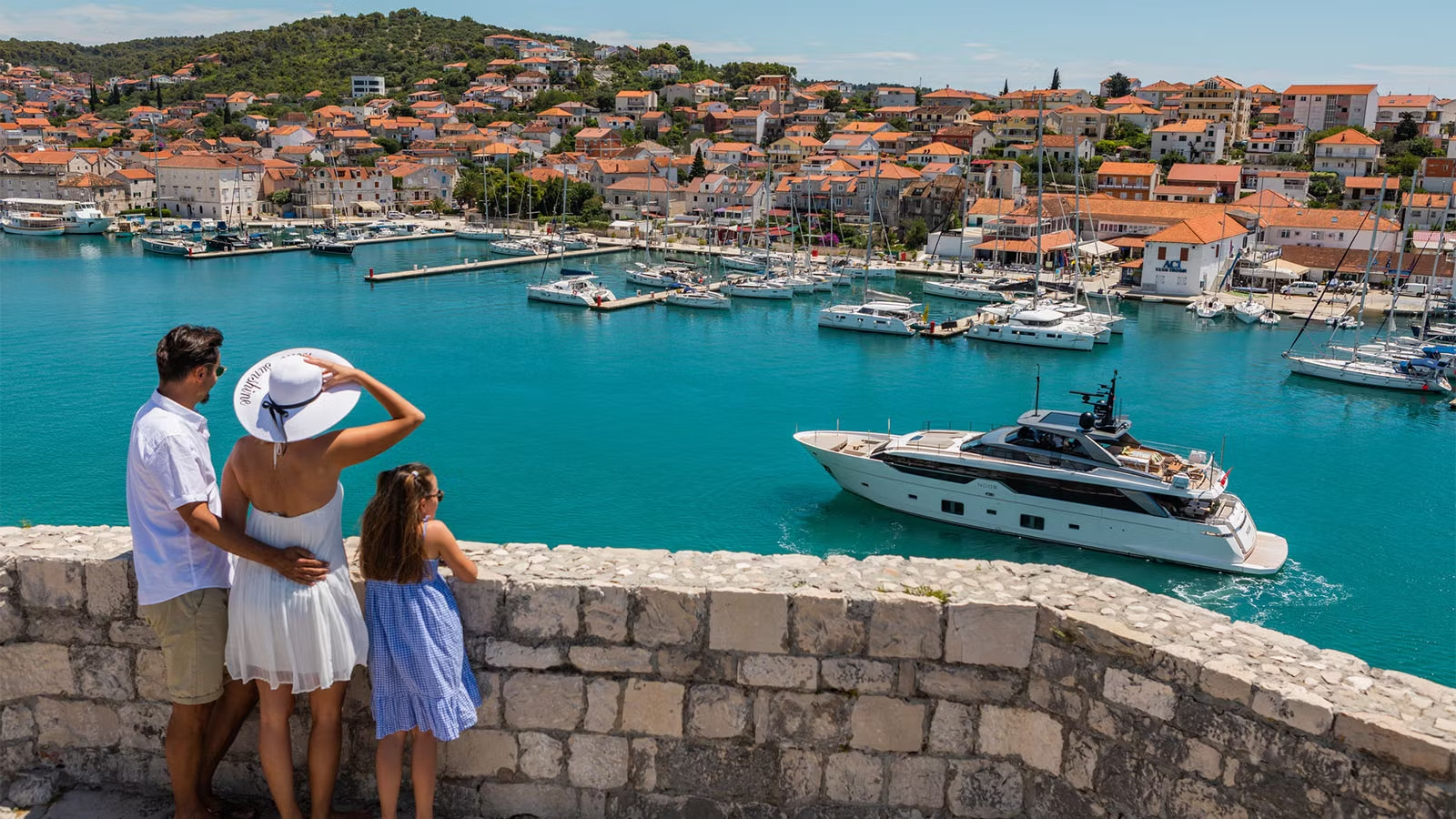
Best time to visit: The best time to visit Croatia on a yacht is typically between late May and early October, when the weather is pleasant and the seas are calm.
Key Cruising areas: The most well-known areas are the Kornati National Park, the Dalmatian Coast, the islands of Hvar, Vis, Brac. The city of Dubrovnik is also a popular destination, offering a range of cultural attractions, restaurants and nightlife.
Don’t miss: Hvar is a stunning Croatian island that is a ‘must-see’. Explore the nearby Pakleni Islands, relax and take in the stunning views at the fortress overlooking the harbour, or dance the night away in the lively bars and clubs. Nature lovers can also go hiking.
Best spots for wining & dining: Dubrovnik is home to some of the country’s best restaurants, including Proto Restaurant, which serves up traditional Croatian cuisine with a modern twist. Split also has some excellent spots for wining and dining. Konoba Kod Joze, located in the old town, serves some of the freshest seafood dishes, while Dalmatino offers traditional Croatian cuisine served in an elegant atmosphere.
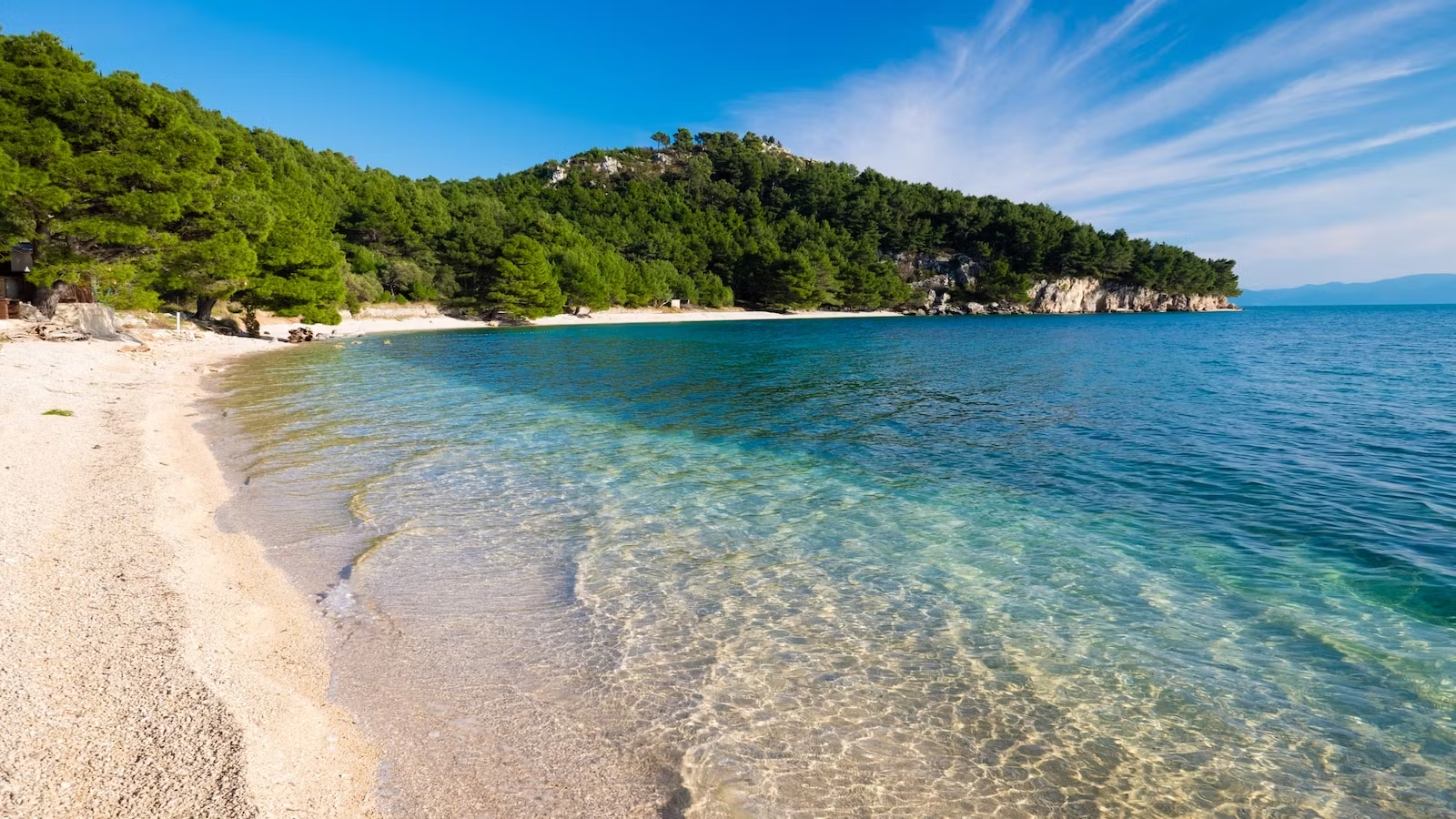
Best Local Dish: Strukli is a savory pastry made with soft cheese and dough. It is usually served with a side of sour cream. Other popular dishes include čobanac (a stew of meat, vegetables and beans), sarma (stuffed cabbage rolls) and pašticada (a beef stew with a sweet-and-sour sauce).
Local Culture: Croatia is a destination where you can perfectly combine a cultural experience with a relaxing cruise. From the coastal walled cities of Dubrovnik, Trogir and Split, to the historic towns of Rovinj and Porec, there's something for everyone to explore and appreciate. A must-do experience in Hvar, is to visit the 16th-century Spanjola Fortress, which offers stunning views of the old town and harbor.
Best Beach: It is impossible to say which beach is the best in Croatia since there are so many beautiful beaches to choose from. Don’t miss Zlatni Rat Beach, located on the island of Brač in the Dalmatian Coast. It is known for its distinctive shape, which extends 500 meters into the Adriatic Sea.
IYC Recommends: Boasting over 140 islands, islets and reefs, the Kornati archipelago is a paradise for yachting enthusiasts. The crystal-clear waters, stunning landscapes, and abundance of wildlife make it a perfect place for swimming, snorkeling, and exploring. The natural beauty of the islands and their untouched nature provide an unforgettable experience that will stay with you for a lifetime.
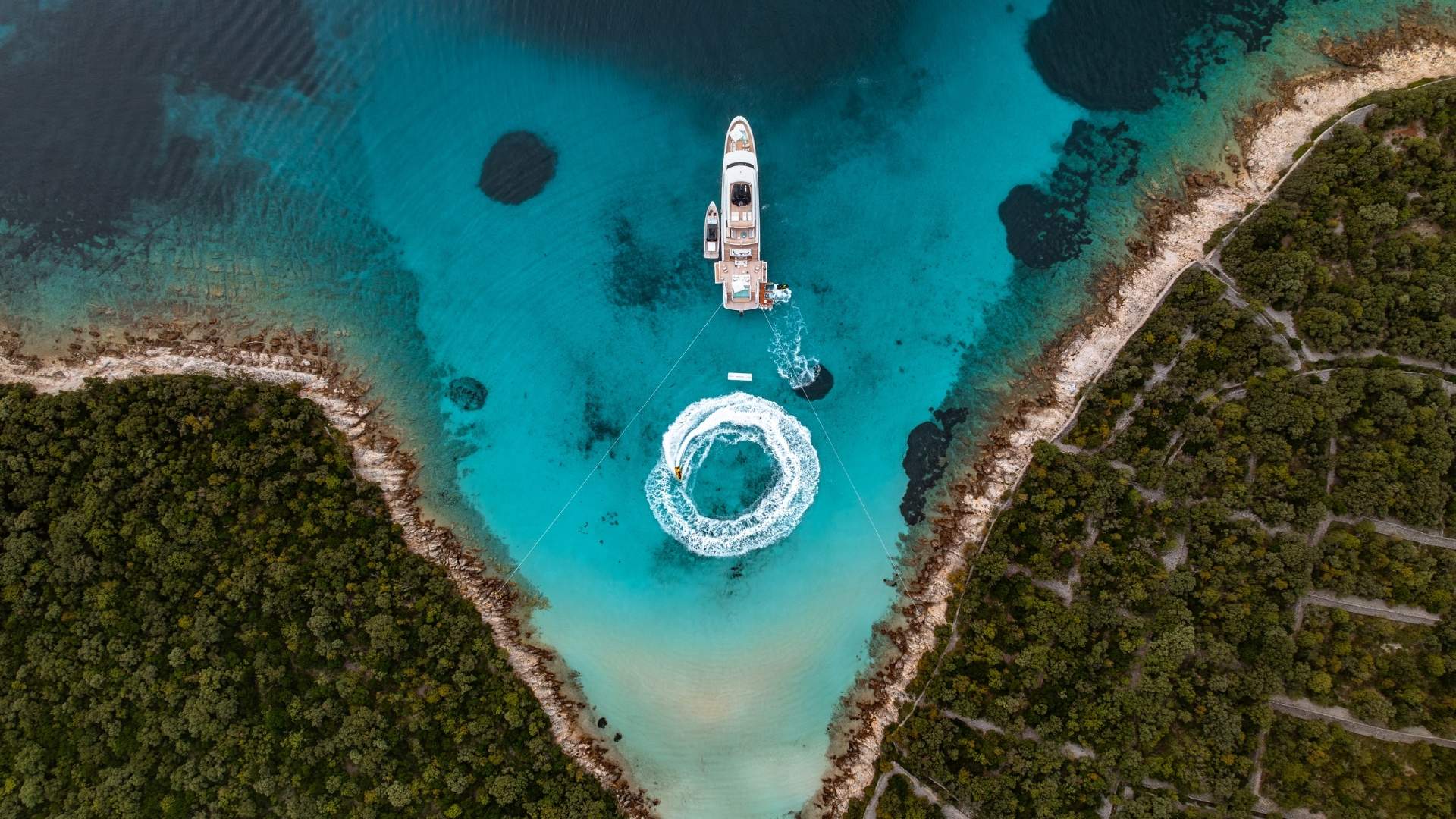
Croatia is the perfect destination for a yacht charter for endless reasons. Accessed easily by yacht, the Adriatic coastline has over 1,200 islands to explore from yachting hubs such as Split and Dubrovnik. Over the years, Croatia has grown in popularity for summer yacht charter itineraries, thanks to its unspoiled environments and marine parks, rich culture and history to discover ashore, and plenty of culinary experiences to enjoy. As one of our most sought-after destinations for a yacht charter, we spoke to our expert consultants to discover the most frequently asked questions on charters in Croatia. Here we outline those FAQs, with everything you need to know ahead of your next Croatia yacht charter vacation:

From ancient Roman capitals to stone forums, Croatia's coastline has an impressive history. Once a prized region of the Roman Empire, the popular Mediterranean destination is now home to Europe's most atmospheric archaeological sites, many of which can be explored easily from a luxury yacht charter, especially when visiting Split, Zadar, and Pula. Here are the top five sites to add to your Croatian vacation itinerary:
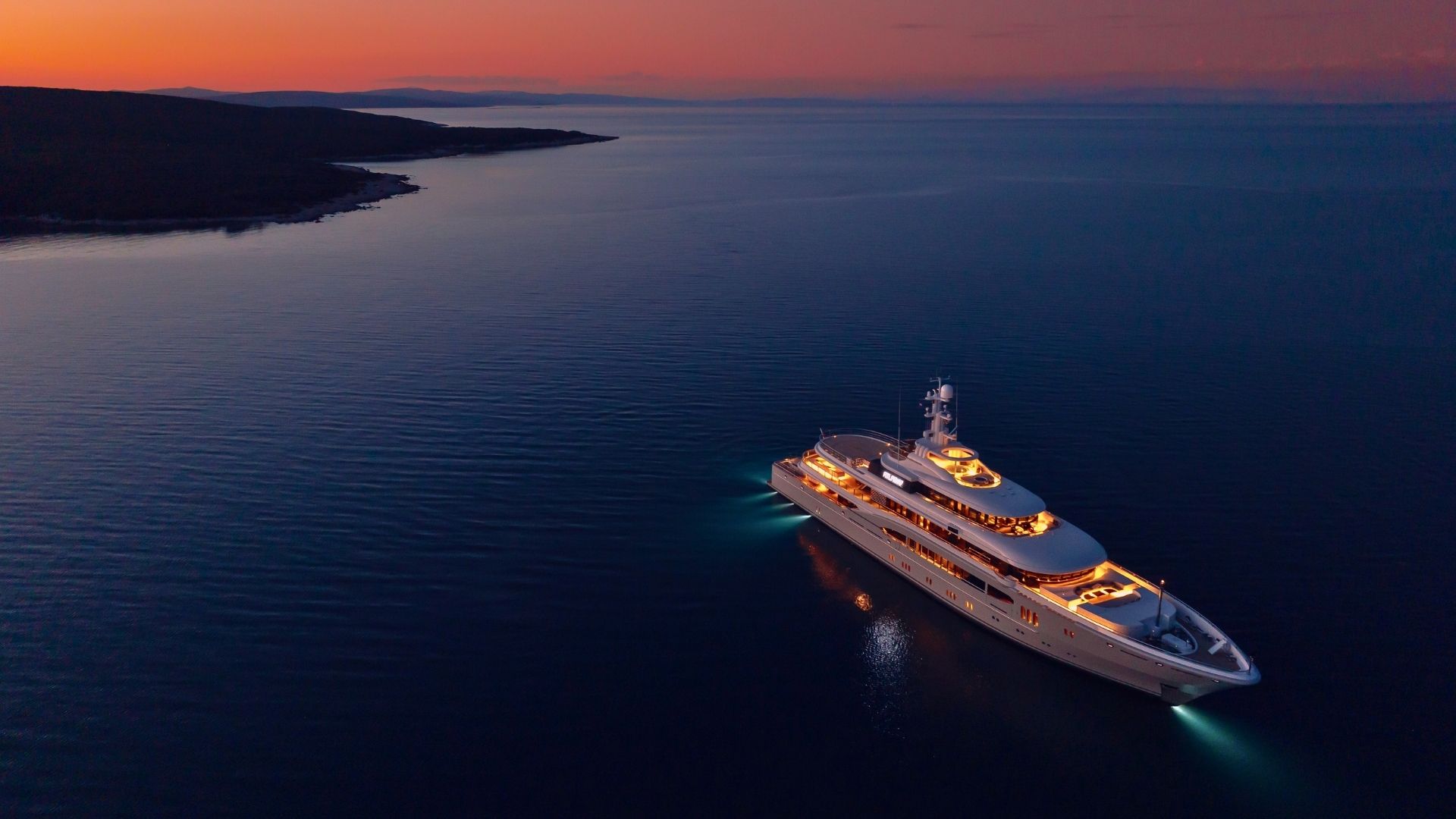
The Adriatic coastline of Croatia's must-visit islands not only offer crystal-clear waters and calm anchorages but also a thriving nightlife scene. Exploring the islands by day welcomes picturesque beaches, bays ideal for watersports, and plenty of opportunities to explore the history, culture, and dining scene ashore. As the sun sets and sundowners flow, many of the islands transform into the region's most exclusive hotspots. Here are our favorite islands in Croatia for the nightlife:
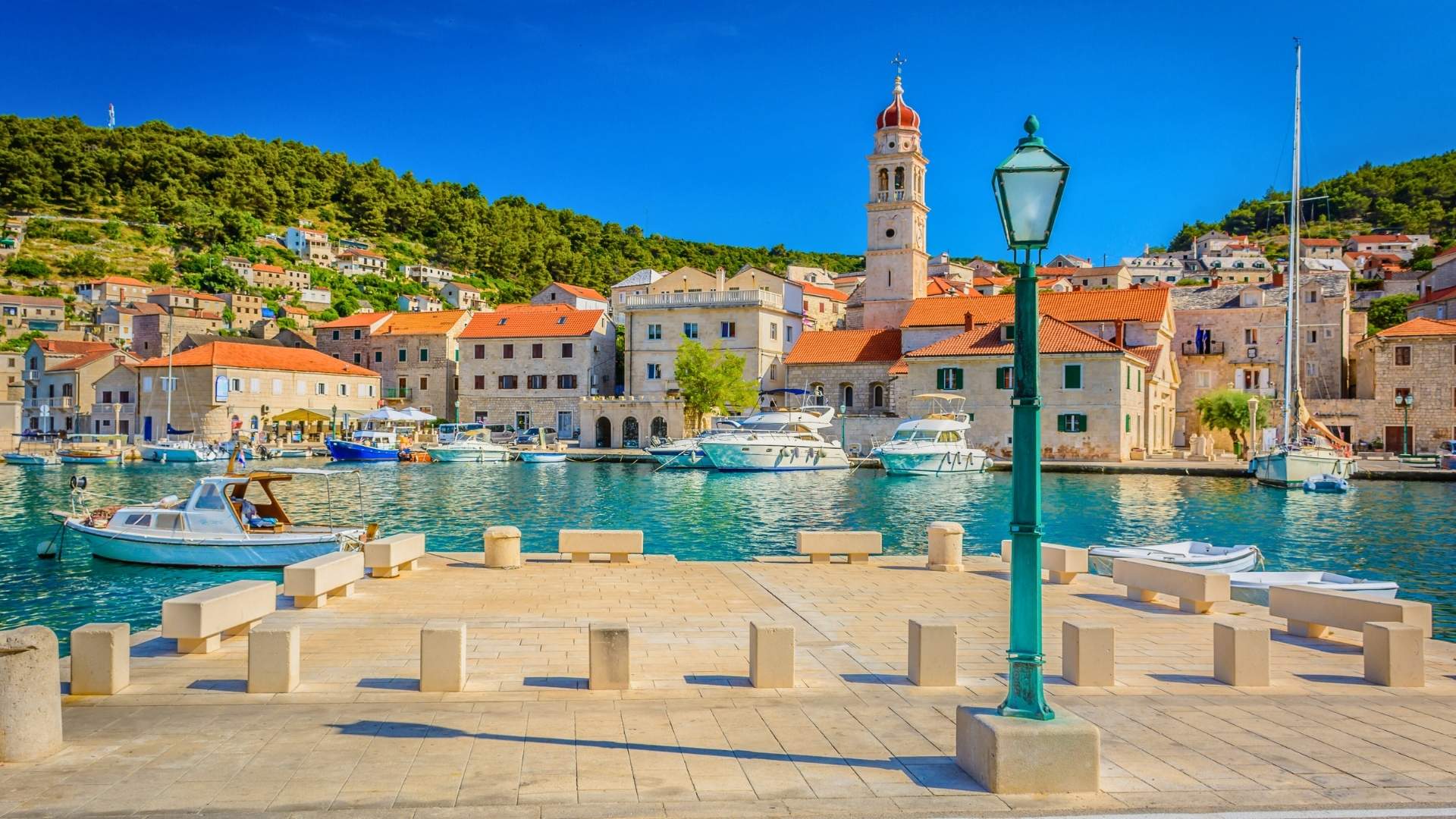
In Croatia, it’s not just the celebrated coastlines and ancient cities that make it a top Mediterranean destination to visit, but also the centuries-old traditions that are still present. Across the country, these are still very much alive, preserved by artisans who’ve continued their crafts over the years. Croatia’s artisanal landscape offers a range of authentic experiences to discover, from exquisite lacemaking to premium olive oils. Here is a selection of the goods and crafts to discover during a Croatian vacation:

Croatia’s Adriatic coast has long been spotlighted for its clear waters, ancient walled towns, and pebble beaches surrounded by olive groves and pines. But for those who want to explore the lesser-known areas and quieter spots, there are plenty of untouched beaches only accessible by boat. For those seeking privacy and nature here are our favorite beach spots and best-kept secrets in Croatia to access when on a luxury yacht charter:
FREQUENTLY ASKED QUESTIONS
The best time to charter a yacht in Croatia is between May and October, when the Adriatic coast enters its peak cruising season. During these months, the weather is reliably warm and dry, with July and August bringing daytime highs up to 86°F (30°C) and sea temperatures around 77°F (25°C). This is the height of the summer season, when popular ports like Hvar, Korčula, and Dubrovnik are in full swing and the sea is ideal for swimming.
Croatia’s prevailing summer wind, the Maestral, creates smooth, consistent cruising conditions, particularly along the Dalmatian Coast. However, July and August can bring higher marina traffic and warmer inland temperatures. For guests preferring fewer crowds and a more relaxed atmosphere, May, June, and September are ideal. These months offer milder temperatures, typically 72°F to 81°F (22°C to 27°C), and excellent visibility for cultural touring or scenic sailing.
October remains a viable option for late-season charters, especially for those drawn to Croatia’s historic towns, wine regions, and natural parks. While some seasonal venues begin to close, the coastline remains peaceful and picturesque.
With over 1,200 islands, modern marinas, and several international airports, Croatia supports a flexible and rewarding charter experience across the full season. Whether you’re drawn to bustling seaside towns or remote island anchorages, there’s a Croatian itinerary to suit every guest and every time of year.
The cost of chartering a yacht in Croatia depends on several factors, including the type of yacht, its length, age, guest capacity, and onboard amenities. Weekly base rates for crewed luxury motor yachts typically start at around €25,000 for smaller yachts and can exceed €350,000 for the largest superyachts.
Seasonality also plays a significant role in pricing. Peak summer rates apply during July and August, when demand is highest. More competitive rates are often available during the shoulder months of May, June, September, and early October, which still offer ideal cruising conditions along the Adriatic.
In addition to the base charter fee, guests should plan for additional operational expenses. These are covered by an Advance Provisioning Allowance (APA), typically set at 25–40% of the charter fee. The APA is paid before embarkation and used to cover fuel, food and drinks, marina costs, and other personalized services. Any remaining balance at the end of the charter is refunded.
A 13% VAT applies to all charters that commence and remain within Croatian waters. This tax is calculated on the base rate and paid in advance, alongside the APA.
While not mandatory, a crew gratuity is customary and appreciated. Most guests offer 10–15% of the base rate, depending on the level of service provided.
To explore current availability and find the right yacht for your Croatian itinerary, IYC’s expert consultants are here to guide you.
Croatia is one of the most rewarding yachting destinations in the Mediterranean, with over 1,000 islands and 3,600 miles of coastline stretching from Istria to Dubrovnik. Depending on your cruising preferences, you can design an itinerary that blends historic cities, uninhabited anchorages, UNESCO sites, and lively harbors. Often, these highlights lie within just a few hours’ sail of each other.
The central Dalmatian Coast is a natural starting point, with charters commonly embarking from Split’s ACI Marina or nearby Marina Frapa in Rogoznica. From here, island-hopping routes link Hvar, Brač, Vis, and Korčula, each known for their scenic bays, hilltop villages, and cultural landmarks. Just north, the Kornati Islands offer a protected national park perfect for quiet anchorages and nature-focused cruising.
Further south, Dubrovnik pairs old-world grandeur with Adriatic charm. ACI Marina Dubrovnik offers a convenient base for routes that include the Elaphiti Islands, Mljet National Park, and even cross-border extensions to Montenegro. To the north, the Istrian Peninsula and Kvarner Gulf invite slower-paced exploration through towns like Rovinj, Pula, and Opatija. These areas are ideal for culinary itineraries or late-season charters.
Most island groups are within short cruising range, allowing for a relaxed rhythm of exploration. Whether you prefer daily changes of scenery or extended stays at anchor, Croatia’s marinas, cultural diversity, and natural beauty make it easy to tailor a charter that suits your style, from vibrant island towns to hidden bays.
For help crafting a personalized itinerary or selecting the right yacht for your chosen route, IYC’s expert consultants would be happy to assist you.
Croatia offers a broad range of charter yachts to suit every style of Adriatic cruising. Motor yachts are the most popular choice, offering speed, stability, and spacious layouts ideal for exploring the Dalmatian Coast and island chains like the Kornati and Elaphiti. From agile sport yachts to full-displacement superyachts, these yachts deliver both comfort and performance.
For a more traditional experience, sailing yachts and gulets provide wind-powered charm and a closer connection to the sea, ideal for slower cruising between historic ports. Catamarans are also widely favored for their stability, shallow draft, and generous deck space, especially for families or relaxed anchoring in quiet bays.
Most yachts accommodate up to 12 guests, depending on their size, and are fully crewed, with fleet options spanning all major categories and styles.
On a Croatian yacht charter, the base charter fee includes the use of the yacht itself, along with a full-time professional crew, yacht insurance, and all standard onboard amenities. However, operating costs are not included in the base charter rate.
However, operational costs such as fuel, provisioning (food and beverages), marina fees, port taxes, and any onshore activities are not included in the base rate. These expenses are covered through an Advance Provisioning Allowance, or APA, which is paid in advance and generally amounts to 25–40% of the charter fee. The APA is managed by the Captain and used throughout the week to cover real-time charter expenses, with a final breakdown provided at the end of the trip. Any unused portion is refunded, while overages are settled directly.
Croatian charters are also subject to a 13% VAT, and while this is the standard rate, some itineraries that extend into international waters may qualify for partial reductions under specific circumstances. Crew gratuity is at the guest’s discretion and is not included in either the charter fee or APA. A customary tip ranges from 10–20% of the base rate and is typically offered at the end of the charter for excellent service.
IYC’s expert consultants provide a clear, customized cost breakdown before booking to ensure every aspect is understood and tailored to your needs.
The APA, or Advance Provisioning Allowance, is a key component of the yacht charter process. It is a fund paid in advance of your charter, typically equal to 25–40% of the base charter fee, and is used to cover all operational expenses incurred during your trip. This includes fuel, food and beverages, marina fees, port taxes, transfers, and any special arrangements made to tailor your experience.
The APA is held onboard and managed by the yacht’s Captain, who ensures all provisioning and logistics are carried out efficiently and in line with your preferences. Prior to boarding, guests complete a preference sheet, noting dietary requests, beverage selections, activity interests, and more, which guides how the APA is allocated. Every expenditure is documented, and at the end of the charter, a full accounting is provided. Any unspent funds are refunded, while any overages are settled directly with the client.
As an example: if your weekly charter fee is $100,000, an APA of approximately $25,000 to $40,000 would be requested in advance. These funds might be used for cruising fuel, provisioning of meals and drinks, berthing fees, and third-party services such as private transfers or curated onshore excursions.
This system allows for complete flexibility, ensuring that the charter experience can be adjusted in real time, whether you decide to cruise further than originally planned or make spontaneous arrangements along the way. APA funds must be received before embarkation, typically via bank transfer alongside the final balance payment.
While weekly charters are the norm in Croatia, especially for crewed motor yachts operating under MYBA agreements, itineraries can vary. Seven-day charters remain the most common format, with rates typically quoted on a per-week basis and routes structured accordingly. However, shorter or longer itineraries may be available, depending on the yacht, season, and scheduling. In these cases, pricing is often based on a pro-rata calculation using a six-day divisor to reflect fixed operational costs. All terms are agreed individually between the client and Central Agent.
Most charters begin and end at 12:00 pm, which is standard practice across the Mediterranean. Noon embarkation allows the crew to complete cleaning, provisioning, and technical checks before guests arrive. Disembarkation at the same hour on the final day supports a consistent and efficient turnaround.
For tailored itinerary planning, yacht selection, and full cost transparency, IYC’s expert consultants would be happy to assist you.
Currently, Croatia offers a safe, accessible, and well-organized environment for international travelers and yacht charter guests. The country is a full member of the Schengen Area, meaning passport-free travel is available for EU residents, and border procedures have been streamlined for all other nationalities with visa-free access or standard entry rules. U.S., U.K., and Canadian passport holders may enter without a visa for tourism purposes for up to 90 days within any 180-day period, in accordance with Schengen regulations.
Croatia uses the euro as its official currency, simplifying onboard provisioning and marina transactions for guests traveling across the Mediterranean. English is widely spoken in charter-friendly ports like Split, Trogir, Hvar, and Dubrovnik, where infrastructure supports high-end tourism, with modern marinas, efficient transport links, and excellent health services.
There are currently no health-related travel restrictions in place. Standard vaccinations are recommended but not mandatory, and hygiene standards throughout the hospitality and yachting sectors remain high.
Croatia’s climate along the Adriatic coast is ideal for yachting, with hot, dry summers and a long cruising window that runs from May through October. During the peak season, particularly in July and August, daytime temperatures range from 77°F to 86°F (25°C to 30°C), while the sea warms to a comfortable 75°F to 79°F (24°C to 26°C), perfect for swimming, watersports, and anchoring in quiet bays.
Spring and early autumn offer a different kind of appeal. In May, June, and September, air temperatures hover between 68°F and 77°F (20°C to 25°C), and the Adriatic remains warm enough for extended time in the water.
The Adriatic is generally calm during the summer, with localized wind systems like the northeasterly Bora and the southerly Jugo occurring more frequently in the north. These are less active during high season and are well monitored by experienced captains. The southern Dalmatian coast, featuring cruising highlights like Hvar, Vis, and Korčula, tends to be warmer and drier, offering some of the most consistent weather in the region.
Rainfall is rare from late spring through early autumn, and Croatia enjoys long hours of sunlight during the summer. In July, for example, sunsets often occur after 8:30 pm, providing extended time for anchoring, watersports, or enjoying dinner on deck.
Croatia uses the euro (€) as its official currency, following its adoption of the eurozone standard on January 1, 2023. This transition replaced the Croatian kuna, which is no longer in use, aligning Croatia more closely with neighboring EU countries and streamlining financial logistics for travelers and charterers alike.
For yacht charters in Croatia, all expenses, including marina berths, fuel, provisioning, and shore excursions, are denominated in euros. Major credit cards are widely accepted at established marinas, restaurants, and boutiques across the Adriatic coast, though it’s advisable to carry some cash when visiting smaller islands or traditional konobas (taverns), where card facilities may be limited.
ATMs are easily accessible in major ports such as Split, Dubrovnik, and Hvar, but availability may taper off in remote bays and anchorages, so guests should plan ahead for incidental expenses.
Croatia operates on a 230V / 50Hz electrical system and uses standard Type C and Type F plug sockets, the same configuration found throughout much of Europe. If you’re traveling from the U.S., U.K., Canada, or any country outside the EU, you’ll need a compatible plug adapter. A voltage converter is only necessary if your device does not support dual voltage; most phones, tablets, and laptops do.
On board a crewed charter yacht, power systems are designed to accommodate international guests. You’ll typically find universal plug sockets, USB charging stations, and onboard power inverters. While docked in Croatia’s well-equipped marinas, yachts rely on stable shore power; at anchor, they switch to onboard generators to maintain full electrical service.
Bringing a universal travel adapter with surge protection is always a smart precaution. For guests with specialized electronics or medical equipment, we recommend confirming compatibility in advance. For yacht-specific configurations and onboard amenities, IYC’s expert consultants would be happy to assist you.
Mobile connectivity in Croatia is strong across most of the Adriatic cruising grounds, with robust 4G service and expanding 5G coverage in cities, islands, and charter-friendly marinas. For guests from EU or EEA countries, Croatia falls under the "Roam Like at Home" agreement, meaning no additional roaming charges apply. Travelers from the U.S., U.K., or other non-EU regions are encouraged to purchase a local SIM or eSIM for seamless data access. Providers such as A1 and Hrvatski Telekom offer reliable coverage with flexible packages. Onboard Wi-Fi is standard aboard most crewed charter yachts in Croatia, though signal strength may vary in more remote anchorages.
Drone use is allowed but carefully regulated. Any drone weighing more than 0.55 lbs (250g) must be registered with the Croatian Civil Aviation Agency, and all flights must comply with local aviation rules. Recreational use is permitted in most open-air zones, provided operators maintain visual line-of-sight, fly under 394’ (120m), and avoid airports, crowds, and environmentally protected zones. Importantly, drone use near other yachts or over historic towns like Dubrovnik’s Old City is restricted without express permission. Unauthorized aerial photography or breaches of privacy can result in fines. For guests wishing to film their charter experience, IYC recommends arranging permits in advance and consulting with your captain to identify permitted flying zones.
Chartering a yacht in Croatia combines Adriatic beauty with excellent standards of health and wellness, offering peace of mind for even the most discerning guests. Croatia maintains a modern and reliable healthcare system, with accessible clinics in major coastal cities and 112 emergency response services offering English-language assistance. Onboard, professional crews are trained in first aid, and yachts carry well-stocked medical kits, ensuring guest safety while at sea.
The region is particularly well-suited to wellness-oriented charters. Calm seas and high water quality make the Adriatic ideal for daily swimming, paddleboarding, and snorkeling. Sea temperatures reach up to 77°F (25°C) in August, and many anchorages offer tranquil settings perfect for yoga or meditation on deck. Guests prone to sun sensitivity should be mindful of peak UV exposure from June through September and prepare with suitable protection and hydration.
Pharmacies, known locally as ljekarna, are easy to find throughout the Dalmatian Coast and typically offer English-speaking support. Tap water is safe to drink, and hygiene standards across Croatian marinas and provisioning points are consistently high. Yacht chefs are adept at tailoring menus to individual dietary preferences, using fresh local ingredients to support a healthy onboard lifestyle.
While Croatia poses no unusual health risks, summer mosquitoes may be present near freshwater estuaries or inland routes. Light cover and repellent are generally sufficient. For guests seeking a wellness-focused escape, many charters incorporate nature hikes, island cycling, and spa-style relaxation into their itinerary.